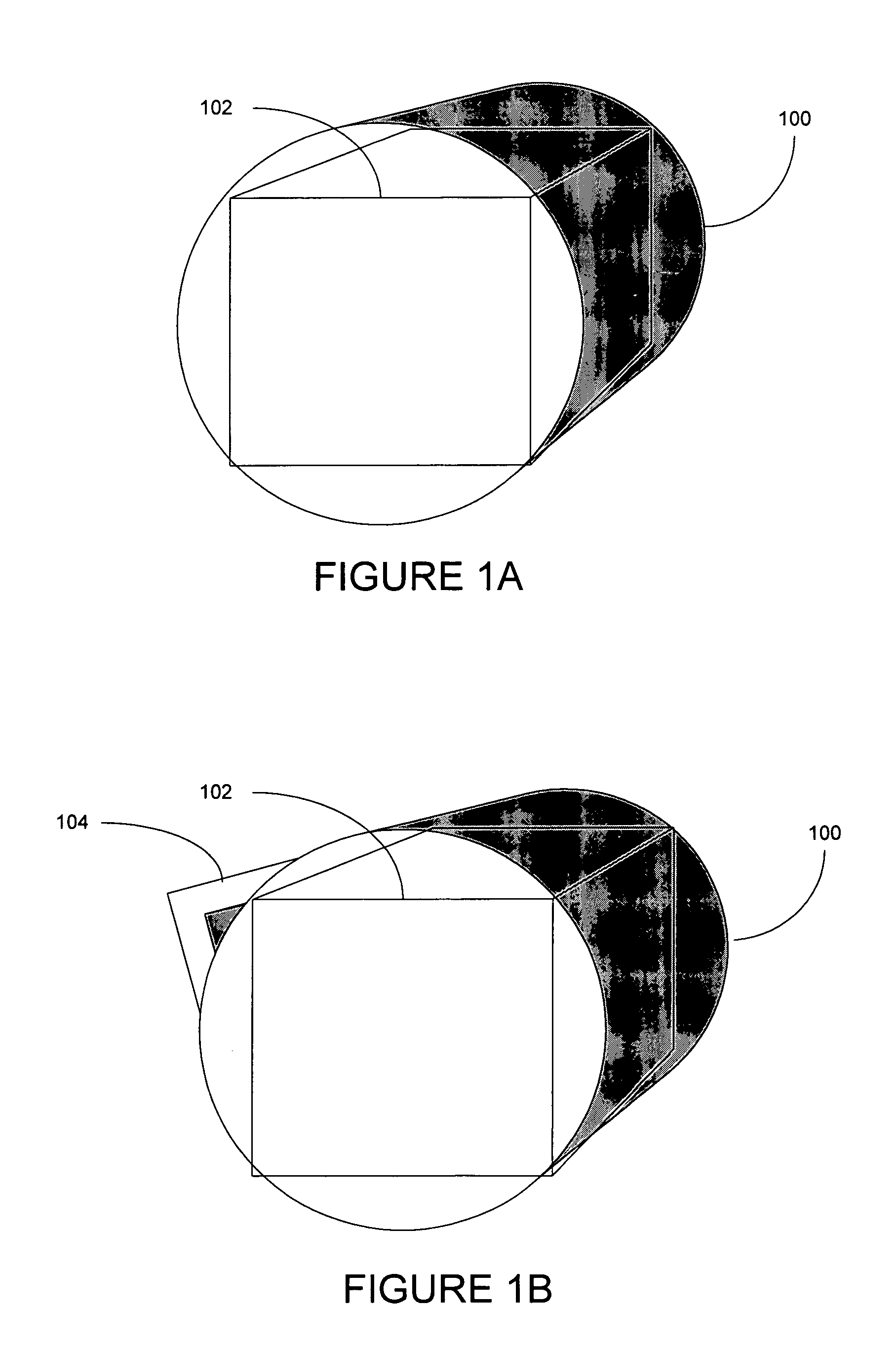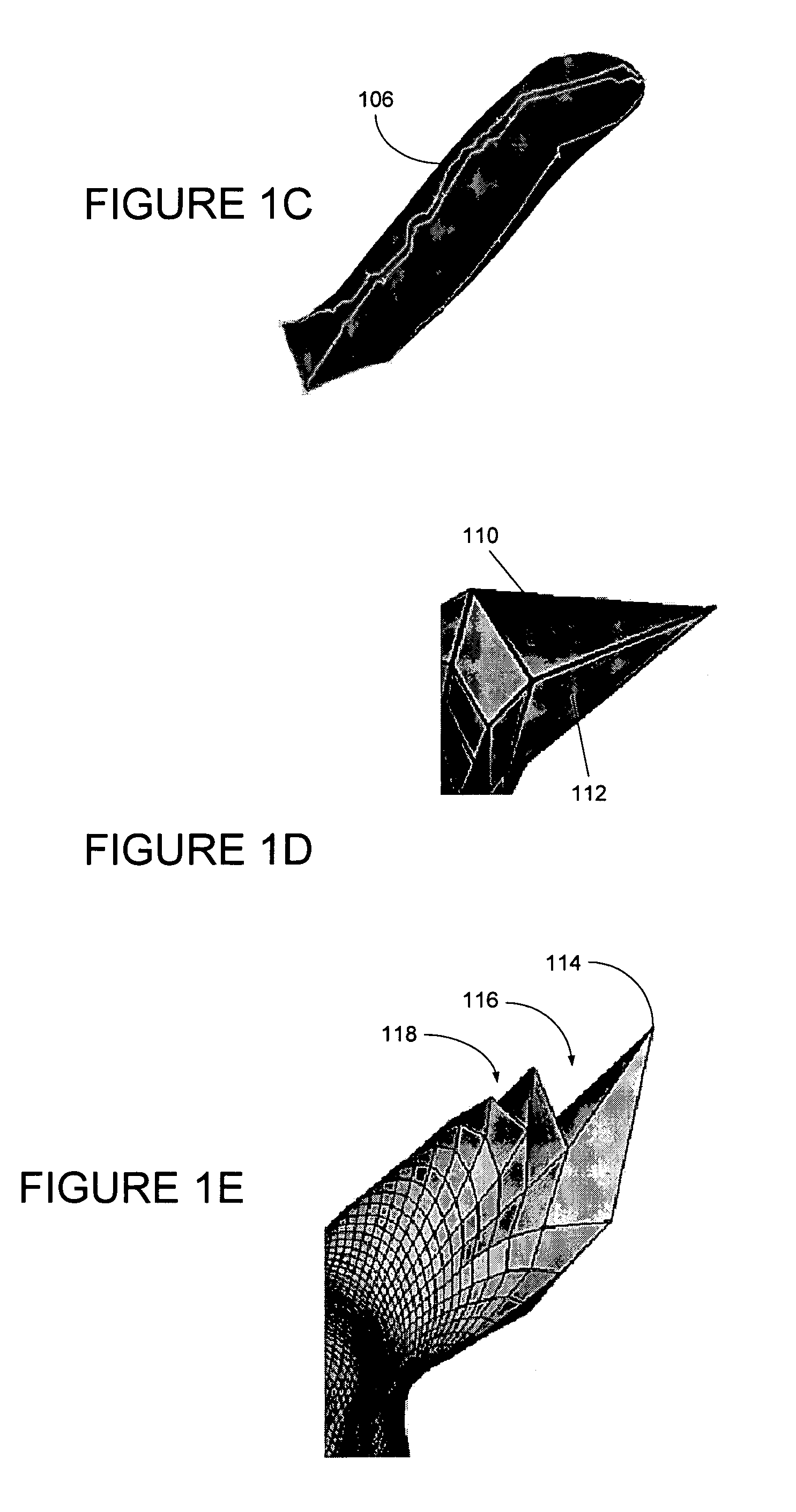Hybrid meshes
a hybrid mesh and mesh technology, applied in the field of object surfaces, can solve the problems of affecting the smooth transition of the base mesh, the addition of new features, and the more difficult implementation of many geometry processing algorithms
- Summary
- Abstract
- Description
- Claims
- Application Information
AI Technical Summary
Benefits of technology
Problems solved by technology
Method used
Image
Examples
Embodiment Construction
[0045]As utilized herein, terms such as “about” and “substantially” are intended to allow some leeway in mathematical exactness to account for tolerances that are acceptable in the trade, e.g., any deviation upward or downward from the value modified by “about” or “substantially” by any value in the range(s) from 1% to 20% of such value. Moreover, as used herein, the terms “face” and “polygon” are synonyms and are used interchangeably, and the term “patch” refers to a region of the original model which will correspond to a face of the base mesh.
[0046]Furthermore, for purposes of this disclosure, a “hybrid” mesh is a hierarchical mesh where at least one patch is represented at a level beyond the base mesh by a mesh formed from a regular refinement step followed by an irregular operation, and an “irregular” operation is one which involves changing the connectivity of a mesh without necessarily maintaining valence restrictions. Examples of irregular operations include without limitatio...
PUM
 Login to View More
Login to View More Abstract
Description
Claims
Application Information
 Login to View More
Login to View More - R&D
- Intellectual Property
- Life Sciences
- Materials
- Tech Scout
- Unparalleled Data Quality
- Higher Quality Content
- 60% Fewer Hallucinations
Browse by: Latest US Patents, China's latest patents, Technical Efficacy Thesaurus, Application Domain, Technology Topic, Popular Technical Reports.
© 2025 PatSnap. All rights reserved.Legal|Privacy policy|Modern Slavery Act Transparency Statement|Sitemap|About US| Contact US: help@patsnap.com



